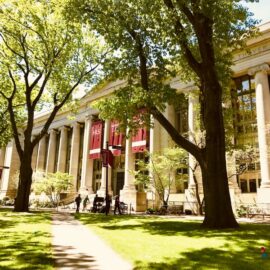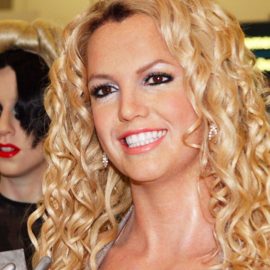
How did Sam Bankman-Fried get rich? What drove him to make money?
Sam Bankman-Fried quickly became one of the wealthiest individuals in the world. Biographer Michael Lewis details how Bankman-Fried found financial success in his first job at Jane Street Capital and his first two companies—Alameda Research and FTX.
Continue reading to learn how Sam Bankman-Fried became wealthy.
How Sam Bankman-Fried Got Rich
How did Sam Bankman-Fried get rich? He found quick success in his Wall Street job right out of school. Then, he struck out on his own to build a financial empire.
Jane Street Capital
After graduating from MIT, Bankman-Fried accepted a full-time offer at Jane Street and worked there for three years. Lewis notes that Bankman-Fried was exceptional at his job: His superiors ranked him the best trader in his class, and at the end of his third year he was poised to earn a bonus of $1 million. Further, Bankman-Fried’s superiors told him that in 10 years, he could expect to be earning, at minimum, $15 million per year.
In 2017, cryptocurrencies were booming. Bankman-Fried realized that he could likely earn (and thus give) substantially more—by his estimation, potentially $1 million a day—by trading in the inefficient crypto market. For this reason, Bankman-Fried left Jane Street in 2017 to start his own quantitative cryptocurrency trading firm: Alameda Research.
Alameda Research
According to Lewis, Bankman-Fried’s empire began with Alameda Research, the quantitative cryptocurrency trading firm that Bankman-Fried started upon leaving Jane Street Capital. As Lewis relates, Bankman-Fried grew Alameda Research from a small group of effective altruists to a firm generating upwards of a billion dollars in annual profit by 2020.
Alameda’s beginning wasn’t seamless, however. Lewis writes that, although Bankman-Fried had convinced wealthier effective altruists to loan him $170 million, by February 2018, the trading system that he had implemented was losing half a million dollars daily. Moreover, tensions started to mount with his employees—a small group of 20 effective altruists—as Bankman-Fried refused to take their concerns seriously, even playing video games during key one-on-one meetings with his team. These tensions culminated in April of 2018 when his entire management team and half his employees quit in protest.
Lewis reports that, with nobody left to challenge him, Bankman-Fried made the bold decision to turn on Modelbot, an automated trading program that exploited international cryptocurrency price disparities to earn quick profits. Modelbot might, for example, notice that Bitcoin was selling for $5,000 in the US and $5,100 in Taiwan, and automatically purchase it in the US and sell it in Taiwan to guarantee a profit. Ultimately, Modelbot was a massive success: Alameda made a profit of $30 million in 2018, even after the initial investors withdrew most of their funds when Bankman-Fried’s entire management team quit. And, as Lewis relates, these profits grew larger over time, with Alameda making $100 million in 2019 and $1 billion in 2020.
FTX
Although Alameda Research eventually became wildly successful, as of 2018, Bankman-Fried didn’t believe it was earning enough money for effective altruism—of its $30 million profit that year, Alameda had to pay the majority to former investors, taxes, and severance packages, leaving only $1.5 million to donate to effective altruism causes. Lewis writes that, consequently, Bankman-Fried decided to open FTX, an international cryptocurrency exchange, in April 2019 to earn even more money.
With FTX, Bankman-Fried managed to develop another company that was on a similar scale to Alameda Research. In both 2020 and 2021, FTX earned over a billion dollars annually in revenue, becoming the world’s second-largest cryptocurrency exchange in the process. In 2021, Bankman-Fried even raised $2.3 billion from venture capitalists in exchange for a 6% stake in FTX, suggesting that FTX was then worth around $40 billion.






